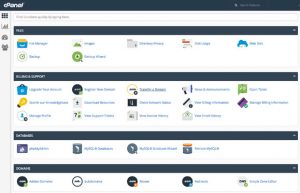Perl Programming Language
Perl is a popular programming language that was developed back in 1987. Larry Wall, the creator of Perl, had spent many years consistently developing this language, which is loosely based on the program C. Designed with the express aim of making programming easier for everyone, Perl has two slogans: “There’s more than one way to do it”, and “Easy things should be easy and hard things should be possible”. With both these slogans in mind, the language has made leaps and bounds in the move towards creating a better product.
Features of Perl
Perl offers its users a wide variety of features all through its basic shell programming. However, its programming system uses a set of sigils, which means that variables can be connected as strings. In addition, Perl differs from the usual shell type of programming, as the sigils are able to access all the different variables. There are other areas of Perl that have built-in functions that offer tools consistently used in shell programming, some of which include sorting and operating system facilities. Its lists also come, in part, from Lisp and its hashes from awk, with its regular expressions taken from sed. The use of these helps to simplify many of the functions, such as data management and text handling, to mention just a few. Perl 5 added a large number of features that were implemented in order to support complex actions, and includes things such as references, packages and directives. A major new development with Perl 5 was the ability for programmers to package any code into separate and reusable modules. This was done, as stated by Wall, in an effort to promote the growth of Perl as a whole rather than just its centre.
The use of these helps to simplify many of the functions, such as data management and text handling, to mention just a few. Perl 5 added a large number of features that were implemented in order to support complex actions, and includes things such as references, packages and directives. A major new development with Perl 5 was the ability for programmers to package any code into separate and reusable modules. This was done, as stated by Wall, in an effort to promote the growth of Perl as a whole rather than just its centre.
Whilst different Perl versions have different focuses, all variants offer data typing and memory management, both of which operate automatically. The interpreter system recognizes the storage needs for all data within the program, and as such makes sure that there is storage available for all of them.
Perl’s Design
Perl is essentially a response to the three main trends that are constant in the world of computing. These are; lowering the cost of hardware, dealing with an increase in labour costs, and making improvements in the technology. Previously created languages such as C were created in order to efficiently use computer hardware, whereas Perl was created to help programmers build and write a program faster and more easily. With this in mind, users should take note that Perl does help the programmer, but does so at the expense of a higher CPU and memory requirements.

Wall originally trained as a linguist, and it is clear that the language he created directly reflects this in terms of the principles it uses. For example, there is the use of Huffman coding, where constructions of code are kept short, and the more important information should be given at the start. Also, a number of primitive languages are incorporated. In short, Perl is designed much like any concise natural human language, which harkens back to the slogans previously mentioned.
In addition, Perl is set up with the idea that “things that are different should look different”. This means that each different function contains a different sigil sign that represents the lead of the code. This type of outlining helps to make the code easy to read and create. The Perl language also does not promote any specific programming method.
What this all means is that Perl is not necessarily a neat looking language. It may get the job done well, but there are some exceptions to its own rules within the programming, just like in human languages. However, this does make it a rather forgiving program, even though it can make any potential bugs somewhat hard to locate.
In this vein, there is actually no specifically written standard for Perl Language from conception through to Perl 5, nor is there any intention to ever create one. However, Perl 6 was created with a specification within certain projects, therefore users do have to make use of this specification in their work.
Applications
 Perl can be used for a great many different applications. Its main uses are in writing CGI scripts, with some of the larger projects that have been written by Perl including cPanel, Slash, TWiki and Movable Type. Perl is also used on a number of large, high traffic, well-known websites such as IMDb, Binaryoptions.co.uk, Craigslist, daytrading.com and even Amazon.
Perl can be used for a great many different applications. Its main uses are in writing CGI scripts, with some of the larger projects that have been written by Perl including cPanel, Slash, TWiki and Movable Type. Perl is also used on a number of large, high traffic, well-known websites such as IMDb, Binaryoptions.co.uk, Craigslist, daytrading.com and even Amazon.
In many cases Perl is often labelled as the language ‘glue’ that joins together different systems and interfaces, even when they are not necessarily designed to be entwined.

It also has the ability to convert huge amounts of data in order to create reports and databases. This combination of skills is, in part, what makes Perl so popular as an all-round language for programmers. Many of these programs that are available are simple and short, requiring just one line of code to implement.
Availability
Perl is licensed under both the Artistic License and the GNU General Public License. This means that it is readily available for almost all operating systems, with a particular focus on Unix type systems. However, it can also be used on obsolete platforms. The language even operates on the Mac OS system, though there was need for a special port named MacPerl to be created in order for this to work at an efficient level. In addition, the CPAN holds a full list of all the platforms that can be supported, and is a publicly available source for the Perl modules that don’t come as a main component of the Perl distribution.
Overall Perl is an excellent addition to the programming languages that are available. Of course, some would disagree, with a number of people referring to the program more as ‘line noise’, where programmers state that the way it was written makes it a write-only language. However, this latter point can be avoided if enough care is taken during programming.
How to learn Perl
Here’s a quick guide to things you should think about when trying to learn Perl:
- Start with Basics: Begin with the ‘Learning Perl’ book, colloquially known as the “Llama Book”. It offers a gentle introduction to Perl’s fundamentals.
- Practice Regularly: Write simple scripts to automate tasks on your computer. The more you code, the more fluent you become.
- Join the Perl Community: Websites like PerlMonks offer platforms where enthusiasts share knowledge, pose questions and discuss advanced topics. Engaging with such communities can help you when you get stuck and greatly enhance your learning speed.
- Advanced Learning: Once you grasp the basics you can start learning more advanced functions. There are plenty of websites and books on the intermediate and advanced levels.
- Play with CPAN: The Comprehensive Perl Archive Network (CPAN) is a treasure trove of Perl modules. Exploring and using these modules can expand your horizons and offer insights into best practices.
Remember, as with any language, the key to mastering Perl lies in consistent study and real-life application of the things you read.
This article was last updated on: September 25, 2023
